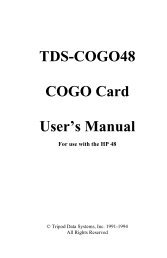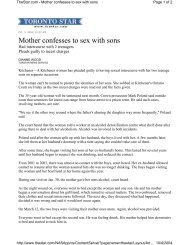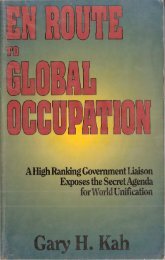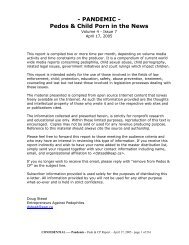G. Edward Griffin - The Fearful Master - PDF Archive
G. Edward Griffin - The Fearful Master - PDF Archive
G. Edward Griffin - The Fearful Master - PDF Archive
Create successful ePaper yourself
Turn your PDF publications into a flip-book with our unique Google optimized e-Paper software.
einforce the false image that our greatest danger is from outside military attack rather<br />
than from internal subversion? Or was it primarily a propaganda weapon for the Soviets to<br />
use showing that the United States is now so fearful of the military superiority of<br />
Communism that it was willing to travel to Moscow and sign a treaty which was clearly to<br />
its military disadvantage?<br />
All of these purposes played a part, of course, but the most important feature of the entire<br />
treaty was one which received practically no public attention or concern. Buried deep<br />
within the terminology of the treaty was a phrase that took disarmament out of the<br />
proposal stage and put it in the commitment stage. When the Senate ratified the treaty it<br />
created a "supreme law of the land" which now binds the U.S., in the words of the treaty<br />
itself, to "the speediest possible achievement of an agreement on general and complete<br />
disarmament under strict international control in accordance with the objectives of the<br />
United Nations."<br />
<strong>The</strong> true significance of the Moscow Test Ban Treaty, therefore, was simply to take us one<br />
more very important step closer to the ultimate transfer of our nuclear weapons to the<br />
United Nations. <strong>The</strong> first step was our formal proposal to the UN in 1961. <strong>The</strong> second was<br />
the passing of the Arms Control and Disarmament Act, which made it legally possible. <strong>The</strong><br />
third step, the Moscow Test Ban Treaty, has committed us to carry out the plan. All that is<br />
now left is to do it. Nothing else stands in the way. Without consulting Congress or the<br />
Senate, the President and the Arms Control and Disarmament Agency can surrender our<br />
weapons whenever they wish.<br />
And so, on September 20, 1963, President Kennedy addressed the UN and said:<br />
Two years ago, I told this body that the United States had proposed and<br />
was willing to sign a limited test ban treaty. Today that treaty has been<br />
signed. It will not put an end to war. It will not remove basic conflicts. It<br />
will not secure freedom for all. But it can be a lever. As Archimedes, in<br />
explaining the principle of the lever, was said to have declared to his<br />
friends: "Give me a place where I can stand-- and I shall move the<br />
world." 24<br />
Exactly four months later, on January 21, 1964, President Lyndon Johnson spoke over<br />
nationwide radio and television and, parroting the sentiments of his predecessor, said:<br />
This morning in Geneva, Switzerland, the eighteen nation committee on<br />
disarmament resumed its work. <strong>The</strong>re is only one item on the agenda<br />
today of that conference. It is the leading item on the agenda of all<br />
mankind, and that one item is peace. . . .We now have a limited nuclear<br />
test ban treaty. We now have an emergency communications link, a<br />
"hot-line" between Washington and Moscow. We now have an<br />
agreement in the United Nations to keep bombs out of outer space.<br />
<strong>The</strong>se are small steps, but they go in the right direction, the direction of<br />
security and sanity and peace. Now we must go further. . . . <strong>The</strong> best<br />
way to begin disarming is to begin. And we shall hear any plan, go any<br />
place, make any plea, and play any part that offers a realistic prospect<br />
for peace. 25



![Robert T McQuaid [rtmq@stn.net] Sent: Friday, October 29, 2004 12 ...](https://img.yumpu.com/51070071/1/190x245/robert-t-mcquaid-rtmqstnnet-sent-friday-october-29-2004-12-.jpg?quality=85)







